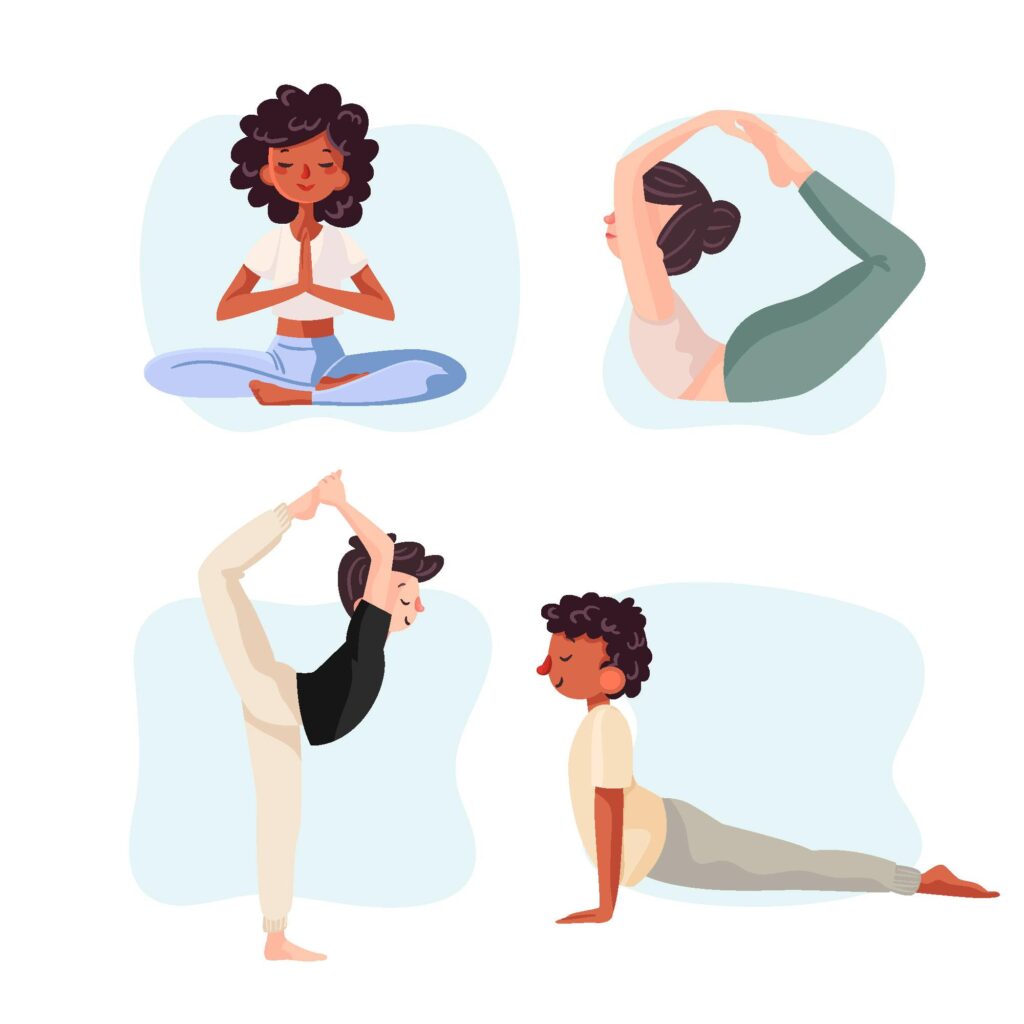Overview
Yoga for a Healthy Heart is a natural and holistic way to enhance health. Regular yoga offers poses that can reduce stress, improve blood circulation, lower blood pressure, and ultimately enhance heart functioning.
These poses nourish the heart physically while balancing the loud emotions and the calm mind that holds the key to heart health. The following article will brief you about the powerful yoga poses for a stronger heart and an enhanced life.
Why Is Yoga Important for Heart Health?
Yoga, when dealing with risk factors at physical and emotional levels, plays a big role in keeping heart health on track and good. Let us glance at some reasons why yoga benefits the heart:

- Reducing Stress Levels: The very act of doing yoga lowers activity in the sympathetic system and the release of hormones that may facilitate heart degenerative processes.
- Lowering Blood Pressure: Certain postures and breathing modalities can bring down the blood pressure and maintain good blood circulation.
- Improves Blood Circulation: Through yoga practice, there is increased oxygen supply to the body, thus preventing an excessive load on the heart.
- Promotes Heart-Friendly Lifestyle: Yoga can increase mindfulness and promote healthier eating, better sleep, and diminished negative behaviors.
- Strengthens Cardiovascular System: Slow movements relax the musculature, improving heart rate variability and general cardiovascular endurance.
- Supports Weight Management: Continuous practice of yoga helps the person to maintain a healthy weight that reduces the risk of heart disorders.
- Enhances Emotional Well-being: Yoga lowers stress and depression, which are linked to poor heart health.
You Can Read Also: Benefits of a Sugar-Free Diet and Easy Ways to Achieve It
7 Effective Yoga Asanas & How to Do Them?
Consistently practicing certain asanas can improve the functions of the heart, reduce stress, control blood pressure, and promote overall cardiovascular health. The poses work on both the strength of your body and the calmness of your mind, both necessary for a healthy heart.
Here are seven heart-protective yoga poses along with easy-to-follow instructions:
- Tadasana (Mountain Pose): This basic pose enhances posture, balance, and a sense of calm. It also aids good circulation and enhances the sense of being rooted. How to do it: Feet together; arms by the sides. Deep breath in; raise the arms overhead while stretching the whole body from toes to fingers. Hold the stretch for 30 seconds to 1 minute with slow exhalation.
- Vrikshasana (Tree Pose): This pose enhances concentration and balance, strengthens leg muscles, and calms the nervous system. How to do it: Stand tall and shift the weight onto the left foot. Bend the right knee and place the right foot on the left inner thigh. Once balanced, bring your hands to the prayer position above your head. Hold for 30 seconds, then change sides.
- Bhujangasana (Cobra Pose): It stretches and opens the chest, opens the heart, and aids in the working of the lungs and heart. It is also a state of relaxation from fatigue and stress. How to do it: Lie on your stomach, legs extended, and hands placed under the shoulders. Inhale as you lift the head and chest with elbows slightly bent. Look upward and hold for 20 to 30 seconds.
- Setu Bandhasana: In Bridge, the heart is opened while strengthening the back, encouraging blood flow, and regulating blood pressure. How to do it: Lie on your back, knees bent, feet firmly on the floor, and hip-width apart. From this position, press into your feet and the arms that are down by your sides and lift your hips towards the ceiling. Hold for 30 to 60 seconds, then release slowly.
- Adho Mukha Svanasana: This pose increases blood circulation, shuts out fatigue, and strengthens the heart by allowing blood to flow toward the brain and upper body. How to do it: Begin on your hands and knees. Tuck your toes and lift your hips, forming an inverted “V.” Keep your hands shoulder-width apart and try to bring your heels down. Hold for 30-60 seconds.
- Padmasana (Lotus Pose): This meditation pose helps calm the mind and relieve stress, which can beneficially influence heart health when the practitioner focuses on deep breathing and relaxation. How to do it: Sit down with legs crossed, placing each foot on the opposite thigh. Keep your back straight and rest your hands on your knees with palms facing up. Breathe deeply and hold the position for a few minutes.
- Shavasana (Corpse Pose): This last phase of relaxation lowers blood pressure, slows heart rate, and relieves stress. It is crucial for mind and body regeneration. How to do it: Lie flat on your back, with your arms alongside your body and legs a few inches apart. Close your eyes, relax by releasing tension from every muscle, and concentrate on slow, rhythmical breaths for five to ten minutes.
You Can Read Also: Sialendoscopy: What are the Causes, Symptoms, Preventions, and Treatment Options?
How does yoga help improve heart health naturally?
Yoga, since time immemorial, has been aiding in the development of overall well-being, with heart health remaining a big aspect of it. Both body strength and mental calmness are equally important for heart health. In that sense, yoga contributes to cardiovascular health in the following ways:
- Stress and Anxiety Reduction: When chronic stress is present, it is a potential cause of heart disease. Yoga deepens the breath, promotes mindfulness, and allows the relaxation of mind and body, along with a reduction of cortisol (stress hormone) level in the body and a mental quieting.
- Knock Down Blood Pressure: Yoga keeps the blood pressure in check as it improves the blood vessels’ functions and tones down the arousal of the nervous system.
- Improves Circulation: It makes blood circulation easy and smooth all over the body and guarantees that oxygen and nutrients reach the heart as well as all other organs.
- Increases Heart Muscle Strength: Some poses in yoga keep the heartbeat low and thus gradually improve cardiovascular endurance while making the heart function better.
- Improves Balance After Cholesterol: Alongside balance enhancement for healthful living, yoga also treats cholesterol levels and risks of atherosclerosis.
- Weight Management Support: Holding weight places pressure on the heart. Yoga supports calorie burning, muscle toning, and mindful eating, all aliases for balancing one’s weight.
- Encourages Deep Breathing: Pranayama-breathing exercises in yoga enhance lung capacity and oxygen supply to the heart, thereby improving heart function.
- Encouraging Calm Sleep: Good sleep is essential for heart health, while yoga improves sleep by diminishing insomnia and restlessness.
Conclusion
To summarize, yoga can be used as an effective and natural method to improve heart health by calming the mind, promoting circulation, balancing blood pressure, and ensuring the health of the whole being.
Yoga is very gentle on the cardiovascular system while promoting heart health without any medication or rigorous workouts. In other words, yoga can greatly benefit those hindering heart diseases or are on the way to healing themselves. If you want professional help to take care of your heart through a holistic approach, Jaipur Hospital offers the best cardiac care to live heartily.


